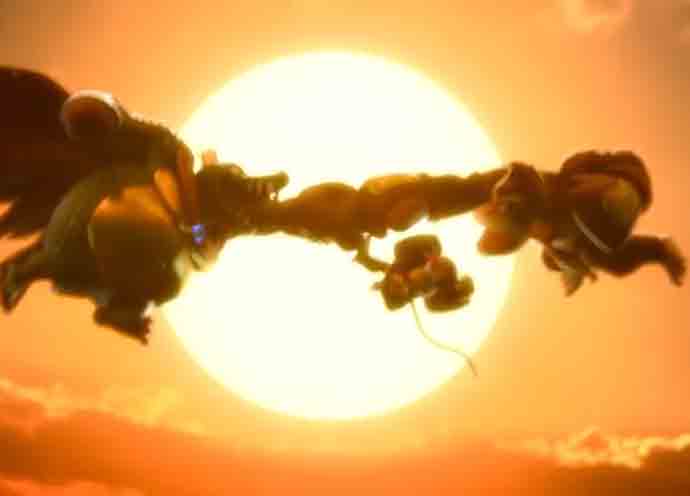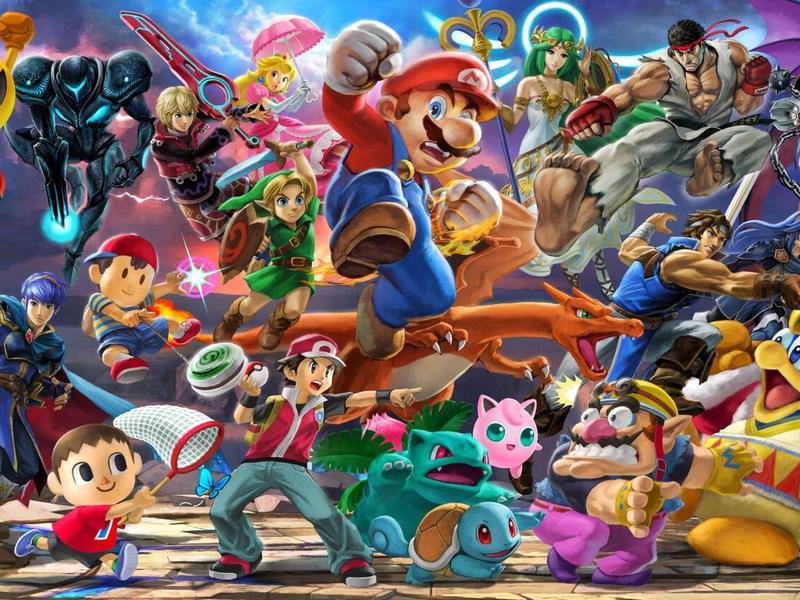‘Smash Bros.’ Director Masahiro Sakurai Discusses The Process Behind Making The CG Newcomer Trailers

Donkey Kong, Diddy Kong, and King. K. Rool in Super Smash Bros. Ultimate (Nintendo)
Super Smash Bros. series director Masahiro Sakurai has a bi-weekly column in Japanese gaming publication Famitsu, a space he often uses to discuss matters pertaining to his hit crossover fighter. Source Gaming founder PushDustIn, a trusted translator within the Smash community, obtained the latest two columns, where Sakurai writes about the process in creating the trailers that announce new fighters.
These trailers started with Smash for 3DS/ Wii U.
The reasoning behind these trailers is to first provide something that fans will enjoy, and secondly to create some buzz.
All of the fighter reveal trailer has both CG animation, and game-play. pic.twitter.com/sfmjKytix5
— PushDustIn (@PushDustIn) July 10, 2019
The first of the two columns was published on July 10, and it dealt with the CG portions of the trailers. As it turns out, Sakurai himself writes the script for every trailer. This means he determines where every scene cuts into gameplay footage, and he also “includes a lot of details” like which music track will play.
Animation company Digital Frontier has assisted in developing many of these videos since Super Smash Bros. for Nintendo 3DS and Wii U, when Sakurai started producing them. Digital Frontier director Yohei Shimozawa worked on several of them. First, the studio is given a detailed explanation of how the CG portions should be constructed, and then they produce the storyboards. When those are approved, they create a “‘storyboard video’ to get the timing/tempo down.”
Once they’re done tweaking the audio, they focus on fine-tuning the character models and backdrops. Importing character models straight from the games would make the trailers’ aesthetics look incohesive, so a lot of effort is exerted to avoid visual incongruities. Once the models and scenery are fine, Digital Frontier turns their attention to the animations, camera and other effects. Sakurai monitors the team “at every step,” and expresses his gratitude for all the work Digital Frontier has done.
The column ends with a message from Shimozawa expressing gratitude to work on the trailers, and to have them loved by so many people around the world.
In the next column, Sakurai will talk about the gameplay footage part of the trailers. pic.twitter.com/6oAPHLNbGo
— PushDustIn (@PushDustIn) July 10, 2019
Sakurai’s second column was published today, and it focused on the gameplay portions of the trailers. As with the CG segments, the gameplay segments involve the effort of several people. Considering how the “models, animations, stages, effects, music, sound effects and sometimes UI are shown,” Sakurai aims to ensure the gameplay footage used will most clearly reflect the fighters’ final build (Sakurai briefly adds how the MP the Hero uses for his attacks has changed since his trailer was recorded). Usually it’s Sakurai’s own development studio that records the footage, although other teams, such as Nintendo’s Mario Club, have assisted on this front too.
Whereas the CG animations are tightly choreographed, the gameplay portions aren’t as thoroughly planned. However, there are guidelines that are followed, namely “showing the strong points of the fighter at the start, seeing the special moves, showing the stage from a distance, including a few gags and showcasing the Final Smash.” Once those are finished, the CG and gameplay segments are spliced together and the sound is adjusted accordingly.
Sakurai closes the second column by commenting that CG is expensive and these trailers increase his workload, noting how the DLC fighters in 3DS and Wii U did not have CG trailers. “However, he feels that it’s worth it, in order to showcase the characters and the collaboration.”
Sakurai thinks the trailers mean a lot to the fans of the characters and series.
He ends the column saying that he is deeply grateful to work on such content. pic.twitter.com/rAXqzJS7nD
— PushDustIn (@PushDustIn) July 24, 2019





